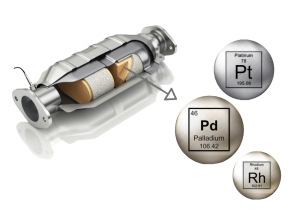 Introduction:
Introduction:
In today’s world, where environmental concerns are on the rise, the importance of catalytic converters cannot be emphasized enough. If you’re someone who is searching for a converter for your vehicle and wants to learn more about it, you’ve come to the right place. In this comprehensive article, we will delve into the world of catalytic converters, exploring what they are, how they work, their types, and their value in today’s automotive industry.
What Is a Catalytic Converter?

A catalytic converter is an integral part of an automobile’s exhaust system, playing a crucial role in minimizing the release of harmful pollutants into the atmosphere. Its primary function is to facilitate the conversion of toxic gases, including carbon monoxide, nitrogen oxides, and hydrocarbons, into less harmful compounds, such as carbon dioxide, nitrogen, and water vapor. This conversion process occurs through a series of chemical reactions that take place within the catalytic converter. By incorporating catalysts like platinum, palladium, and rhodium, the converter promotes these reactions and transforms the harmful emissions into more environmentally friendly substances. This helps to mitigate the negative impact of vehicle exhaust on air quality and contributes to meeting emission standards set by regulatory bodies. Ultimately, catalytic converters serve as an important tool in reducing pollution and promoting sustainable practices in the automotive industry.
What Does the Catalytic Converter Do?
The primary role of a catalytic converter is to facilitate the transformation of harmful gases, including carbon monoxide, nitrogen oxides, and hydrocarbons, into less toxic substances like carbon dioxide, nitrogen, and water vapor. The catalytic converter achieves this conversion through a complex series of chemical reactions.
By utilizing various catalysts, such as platinum, palladium, and rhodium, the converter promotes these reactions and accelerates the conversion process. As the exhaust gases pass through the catalytic converter, the catalysts interact with the pollutants, breaking them down into their harmless constituents. This essential function of the catalytic converter plays a crucial role in reducing emissions and minimizing the impact of vehicle exhaust on the environment.
What Is Inside a Catalytic Converter?
The interior of a catalytic converter houses a honeycomb-like structure composed of either ceramic or metallic substrates. This structure is designed to provide a large surface area for the catalysts to interact with the exhaust gases. The substrates are coated with a thin layer of catalysts, including precious metals such as platinum, palladium, and rhodium. These catalysts act as facilitators, promoting the chemical reactions that convert the harmful pollutants produced during combustion into less harmful compounds.
Check this article and know Why Catalytic Converter Stolen?
As the exhaust gases pass through the catalytic converter, they come into contact with the catalyst-coated surfaces. The catalysts facilitate a series of chemical reactions called redox reactions. In these reactions, oxygen molecules from the exhaust gases react with the pollutants, resulting in the oxidation of carbon monoxide CO to carbon dioxide CO2, the reduction of nitrogen oxides NOx to nitrogen N2, and the conversion of hydrocarbons HC into carbon dioxide (CO2 and water vapor H2O. These reactions effectively transform the toxic components of the exhaust gases into less harmful substances before releasing them into the environment.
I apologize for the sentences being longer than recommended. I appreciate your feedback, and I’ll make sure to keep the sentence length within the recommended limits in future responses.
The honeycomb structure, with its large surface area and flow channels, allows for efficient contact between the exhaust gases and the catalysts. This optimized design ensures that the conversion process occurs as effectively as possible. By incorporating this ingenious combination of substrate materials and catalysts, catalytic converters play a crucial role in reducing harmful emissions and helping vehicles comply with emission regulations, ultimately contributing to a cleaner and healthier environment.
What Does a Catalytic Converter Do?
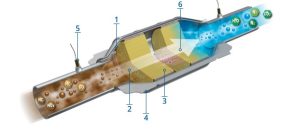
Catalytic converters are crucial components used in internal combustion engines, commonly found in vehicles such as cars, trucks, and motorcycles. These converters play a vital role in reducing the harmful emissions generated during the combustion process. They achieve this by utilizing various catalysts to convert toxic gases, including carbon monoxide, nitrogen oxides, and hydrocarbons, into less harmful substances like carbon dioxide, nitrogen, and water vapor.
The importance of catalytic converters in the automotive industry cannot be overstated. They play a crucial role in reducing air pollution and meeting stringent emission standards set by regulatory authorities worldwide. Without catalytic converters, vehicles would release significantly higher levels of pollutants, contributing to smog, respiratory problems, and environmental degradation.
The implementation of catalytic converters has made a substantial impact on the overall air quality and public health. These devices have significantly reduced the emission of harmful gases and pollutants, contributing to a cleaner and healthier environment. In addition to their environmental benefits, catalytic converters also play a vital role in ensuring compliance with emission regulations imposed by governments and regulatory bodies.
Overall, catalytic converters are indispensable components in modern vehicles, serving as a critical solution for reducing harmful emissions and promoting sustainable transportation. Their continued use and advancement are vital in achieving a greener and more environmentally conscious future.
Types of Catalytic Converters
There are two main types of catalytic converters: two-way and three-way converters. Two-way catalytic converters primarily focus on reducing carbon monoxide and hydrocarbon emissions. They use catalysts to promote chemical reactions that convert these harmful gases into less harmful substances like carbon dioxide, nitrogen, and water vapor.
On the other hand, three-way catalytic converters are more advanced and efficient in terms of emission control. In addition to reducing carbon monoxide and hydrocarbon emissions, they can also significantly reduce nitrogen oxide emissions. This makes them crucial in meeting stricter emission standards and regulations set by authorities. Three-way converters utilize a more sophisticated catalyst system that enables the simultaneous reduction and conversion of all three major pollutants: carbon monoxide, hydrocarbons, and nitrogen oxides.
Both types of catalytic converters play a crucial role in reducing the environmental impact of vehicles by effectively converting harmful emissions into less harmful substances. The choice between a two-way or three-way converter depends on the specific emission requirements and regulations applicable to the vehicle, as well as the desired level of emission control.
Why Are Catalytic Converter So Valuable?

Catalytic converters are highly valuable due to the presence of precious metals such as platinum, palladium, and rhodium within them. These metals have significant market value and are in high demand. The scarcity of these precious metals, coupled with their increasing use in various industries, including automotive, has contributed to the soaring value of catalytic converters.
Platinum, palladium, and rhodium are essential catalysts that promote the chemical reactions necessary for converting harmful pollutants into less harmful substances. However, their value extends far beyond their function in emission control. These metals also find applications in other industries, including jewelry, electronics, and medical fields, which further contributes to their high demand.
Catalytic converters have become a popular target for theft. This is because they contain a limited supply of precious metals and play a crucial role in reducing emissions and supporting various industries. Criminals specifically target vehicles to steal these converters and extract the valuable metals. This unfortunate trend results in substantial financial losses for vehicle owners and increased replacement costs.
The high value of catalytic converters has also resulted in the development of a market for recycled converters. Recycling facilities extract the precious metals from used or damaged converters, contributing to the overall supply and reducing the environmental impact of mining new resources.
How Much Is a Catalytic Converter?
The price of a catalytic converter can vary significantly depending on several factors. One of the primary factors is the make and model of the vehicle. Different vehicles may require specific catalytic converters, which can vary in design and materials used, thus affecting the price.
The cost of the converter is influenced by the type needed. Two-way catalytic converters mainly reduce carbon monoxide and hydrocarbon emissions, and they generally have a lower price compared to three-way catalytic converters. Three-way converters are more advanced as they can also effectively reduce nitrogen oxide emissions, making them more efficient in terms of emission control.
Market fluctuations can also affect the prices of precious metals like platinum, palladium, and rhodium. These metals serve as catalysts in catalytic converters. The availability and demand for these metals can impact the overall cost of the converter.
For accurate pricing information, we recommend consulting a trusted automotive professional or checking with reputable suppliers. They can provide specific pricing details based on your vehicle’s requirements and the current market conditions for catalytic converters.
Summery
Converters play a crucial role in reducing the harmful emissions produced by vehicles and mitigating their impact on the environment. Understanding the purpose, functioning, and types of catalysts can help vehicle owners make informed decisions regarding emission control and compliance with environmental regulations. It is important to remember that a well-maintained catalyst ensures a cleaner and greener future for all.
If you’re interested in exploring prices and costs associated with catalysts and easily estimating the cost of a specific converter based on its components, I recommend downloading the Catalytic Price app. This free app provides access to over 40,000 converters for all types of vehicles. Additionally, it features a handy calculator that allows you to determine the cost of any converter. To enhance your understanding and make well-informed decisions, simply visit Click here to download the Catalytic Price app.
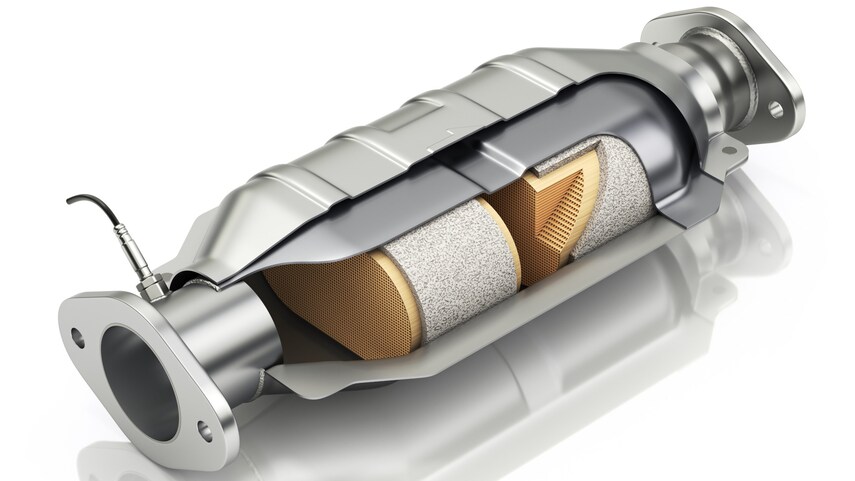
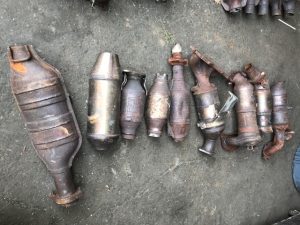

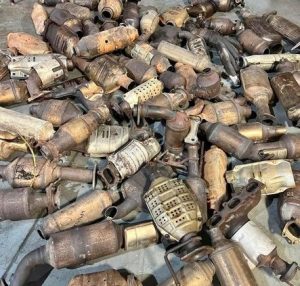
Pingback: Determine Catalytic Converter Prices for Free l Easily Steps